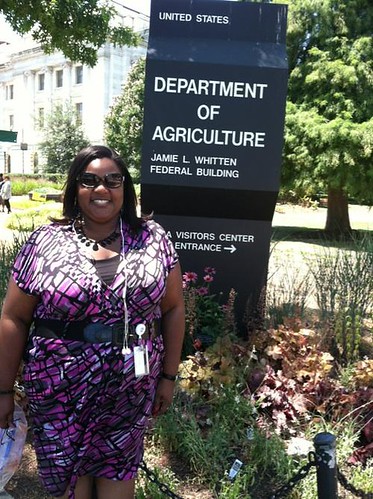
This post is part of the Science Tuesday feature series on the USDA blog. Check back each week as we showcase stories and news from USDA’s rich science and research portfolio.
Back to school has a three-fold meaning for me these days. In addition to watching my daughter and son head back to complete yet another year of college and high school, respectively, I get to meet my new students at an area community college. These math students arrive in my classes with varying levels of academic preparedness, goals and aspirations and I have the chance to encourage and inspire them to consider a future career in mathematics or statistics.
As their evening instructor, I teach the core curriculum with the knowledge that what they learn can far outweigh the credit hours each student will receive for completing these courses. My adult learners will benefit from real world practical answers to the age-old rhetorical question, “When am I ever going to need this?” That’s where my experience with USDA’s National Agricultural Statistics Service (NASS) comes in. I have seen just the kind of impact numbers can have on rural communities, and whole sectors of U.S. agriculture. Just as I have learned in my job, my students get to see the importance of accuracy when it comes to numbers and data. Of course I am not alone in this approach. Like me, many adjunct professors of mathematics bridge the gap for math learners from what is being taught to its practical applications.
At times, tangible examples of mathematical applications such as how many end-users benefit from USDA’s statistical database query tool known as Quick Stats is warranted. Often a brief description of what we mathematical statisticians do for NASS in addition to many other examples of mathematical applications will pique their interest. College level mathematics is the gateway to progression into their chosen fields. For most there is no way around taking mathematics courses in pursuit of the many associate degrees and professional certifications offered at community college.
It doesn’t all end in the classroom for me either. In addition to becoming a part-time evening instructor, I volunteer as a tutor in the math lab. On a campus where traditional lecture style learning is quickly being replaced by technology in the classroom, I see first-hand the effects of such a paradigm shift. My background as a statistician for NASS and former chalkboard style teacher elevate my credibility with the students who come in for extra help. While the math lab is computer intensive, we living humans stand at the ready to answer some fairly tough math questions and the occasional, “How do I get logged in?”
And so as another school year begins, I look upon it with both excitement and trepidation. Every year is a new opportunity to further students’ knowledge about mathematics and statistics and to potentially inspire enough interest in these fields that my current students may become my future colleagues.
